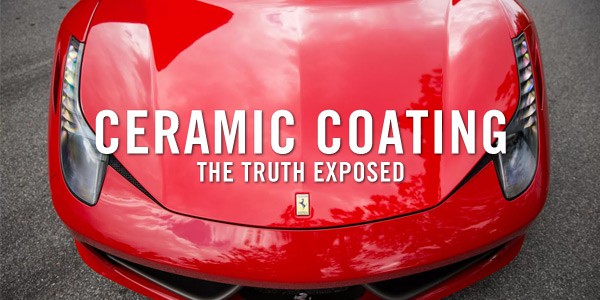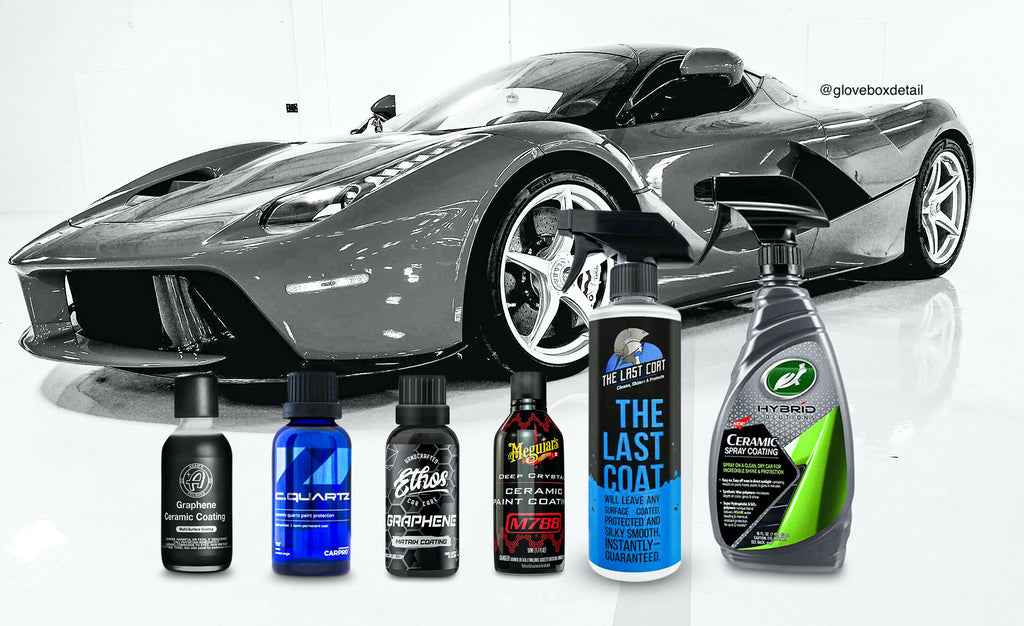Ceramic Pro: Reinvent Your Automobile's Defense and Aesthetic appeal
Ceramic Pro: Reinvent Your Automobile's Defense and Aesthetic appeal
Blog Article
The Science Behind Ceramic Covering: Just How It Boosts Your Lorry's Visual and Durability

Recognizing Ceramic Layer Chemistry
The chemical composition of ceramic finishings plays a crucial duty in determining their toughness and safety buildings on vehicle surfaces. Ceramic coatings are commonly comprised of silicon dioxide (SiO2), which is a main element offering hardness and heat resistance. Various other active ingredients such as titanium dioxide, silicon carbide, and polysilazanes are usually added to enhance specific residential or commercial properties like UV hydrophobicity, bond, and resistance.
Silicon carbide is understood for its abrasion resistance, making the ceramic layer sturdy and difficult versus physical damage. Polysilazanes are used to enhance the coating's versatility and attachment to the automobile's surface, making sure durable defense. Understanding the chemistry behind ceramic finishes is critical for both applicators and automobile proprietors to appreciate the value and advantages these finishes supply in keeping the visual charm and durability of automobiles.
Improved Gloss and Mirror-like Complete
Comprehending the chemical structure of ceramic layers not only reveals their safety properties yet also clarifies exactly how they add to attaining an enhanced gloss and mirror-like coating on car surface areas. The secret to the glossy result exists in the nano-ceramic particles existing in the finish. These bits fill out tiny pores and imperfections externally, producing a smooth and level coating. As light hits the coated surface area, it mirrors consistently, giving the look of a deep, shiny shine. Additionally, the chemical framework of ceramic finishes enables them to form a strong bond with the lorry's paintwork, avoiding oxidation and keeping the clearness of the coating gradually. This bond also stands up to ecological pollutants, such as dust and gunk, that can dull the shine of the lorry. The mix of filling up residential or commercial properties, light reflection, and durable security makes ceramic coatings a preferred option for those looking for a mirror-like and lively surface for their vehicles.

Influence On Paint Defense and Durability
Ceramic finishes for vehicles considerably boost the longevity and defense of the paintwork. By forming a chemically immune layer in addition to the automobile's clear layer, ceramic finishes act as an obstacle versus various ecological contaminants that can damage the paint over time. These finishes are developed to drive away check it out dirt, water, roadway salt, bird droppings, and various other hazardous substances, reducing the danger of paint oxidation and corrosion. In addition, the solidity of ceramic layers dig this supplies a level of scratch resistance, helping to keep the lorry's appearance for an extensive period.
In terms of durability, ceramic finishes provide a resilient service compared to typical waxes or sealers. Generally, the safety residential or commercial properties of ceramic finishings add substantially to protecting the automobile's paintwork and improving its aesthetic appeal over a prolonged period.
Resistance to Contaminants and Harsh Elements
With the protective shield offered by ceramic layers versus numerous ecological impurities and elements, lorries have the ability to keep their excellent look regardless of exposure to harsh problems. Ceramic finishings create a solid obstacle that drives away water, dirt, dirt, and other common toxins, avoiding them from bonding to the automobile's surface. This hydrophobic nature not only makes cleaning easier but also decreases the danger of water areas and etching triggered by acidic impurities. Furthermore, the chemical resistance of ceramic layers aids safeguard the paint from bird droppings, pest splatter, tree sap, and various other destructive compounds that can damage the finish over time.
Moreover, ceramic coatings use UV protection, securing the automobile's paint from the sun's harmful rays that can create fading and oxidation. This resistance to UV damage aids preserve the shade strength and luster of the paint for longer periods. By forming a durable and long lasting obstacle, ceramic finishes make sure that the car's exterior continues to be protected versus a variety of contaminants and extreme elements, preserving go now its aesthetic appeal and longevity.
Application Techniques and Maintenance Tips
For optimal results when applying ceramic coatings to cars, utilizing correct strategies and sticking to advised maintenance methods are important. The application procedure of ceramic finishing calls for attention to information and accuracy. Before using the ceramic covering, it is important to extensively tidy and decontaminate the automobile's surface to guarantee correct adhesion. This entails cleaning, claying, and possibly brightening the paint to create a smooth canvas for the ceramic finish to bond properly.
When applying the ceramic coating, it is recommended to work in tiny areas to make sure even coverage and to stop the product from drying out too quickly. Using applicator pads or microfiber fabrics, apply the covering in a crisscross or up-and-down activity, depending upon the product's instructions. After the covering is applied, permit it to cure for the defined time before buffing off any kind of residue.
In regards to maintenance, normal washing with pH-neutral soaps and avoiding rough tools or harsh chemicals will certainly help protect the ceramic covering's honesty. Routine assessments for any damages or endure the finish can likewise assist maintain its safety properties with time.

Conclusion
In verdict, ceramic finish enhances a lorry's aesthetic appeal and durability with its chemical composition, supplying a glossy surface and protecting the paint from environmental contaminants. Its resistance to severe aspects and convenience of maintenance make it a prominent selection for cars and truck owners aiming to protect the appearance of their cars. Overall, ceramic layer is a clinically backed solution for keeping the look and durability of your car.
Understanding the chemistry behind ceramic layers is critical for both applicators and car owners to appreciate the value and benefits these coatings use in maintaining the visual appeal and long life of cars. (ceramic pro)
Recognizing the chemical structure of ceramic finishings not only discloses their safety buildings but also drops light on just how they add to achieving an enhanced gloss and mirror-like finish on automobile surface areas. By creating a chemically immune layer on top of the lorry's clear layer, ceramic coverings act as a barrier against various environmental contaminants that can harm the paint over time. Overall, the safety residential properties of ceramic layers add significantly to preserving the automobile's paintwork and improving its visual charm over an extensive duration.
In final thought, ceramic layer boosts a vehicle's aesthetic charm and durability through its chemical composition, providing a glossy finish and shielding the paint from ecological impurities.
Report this page